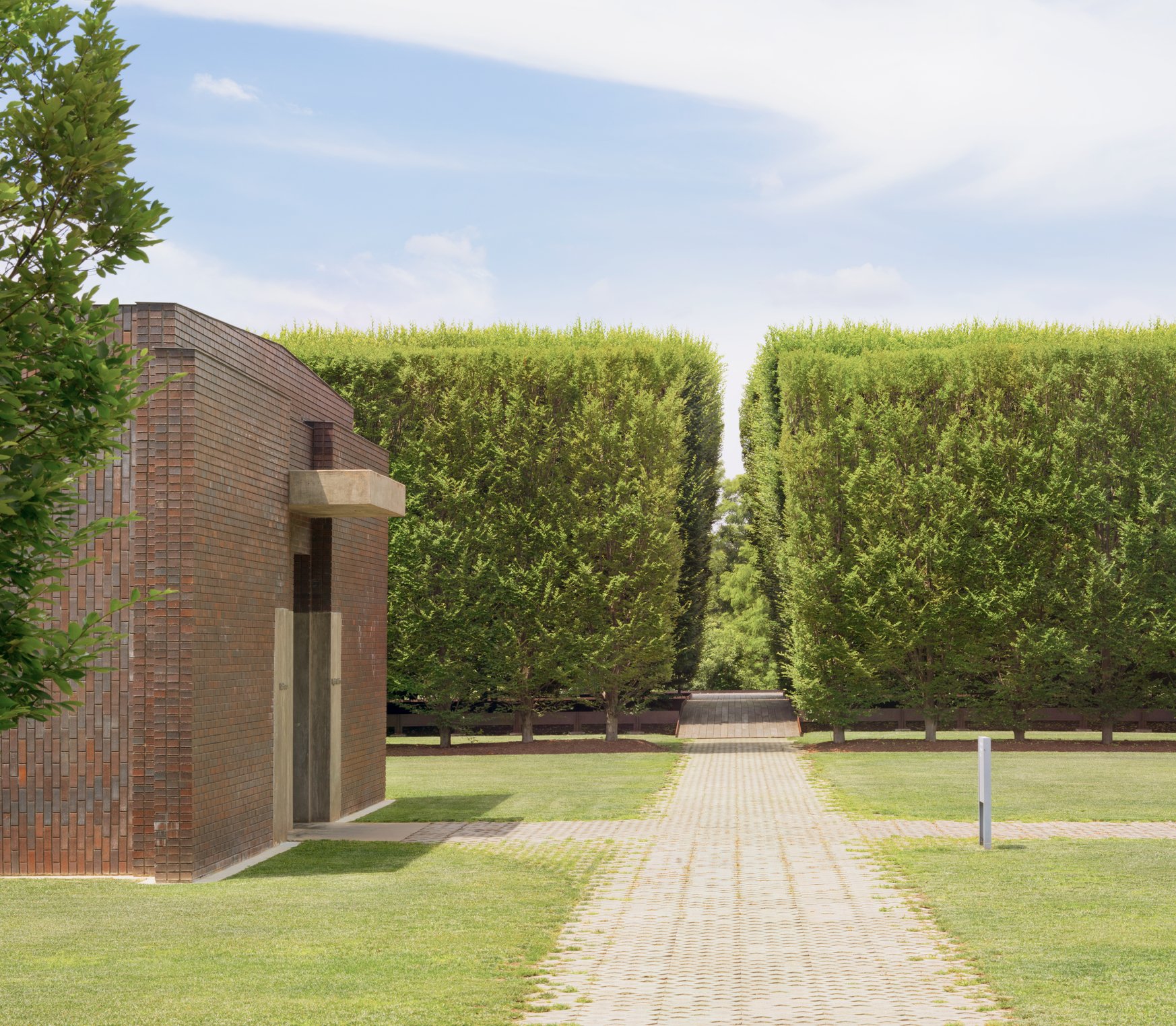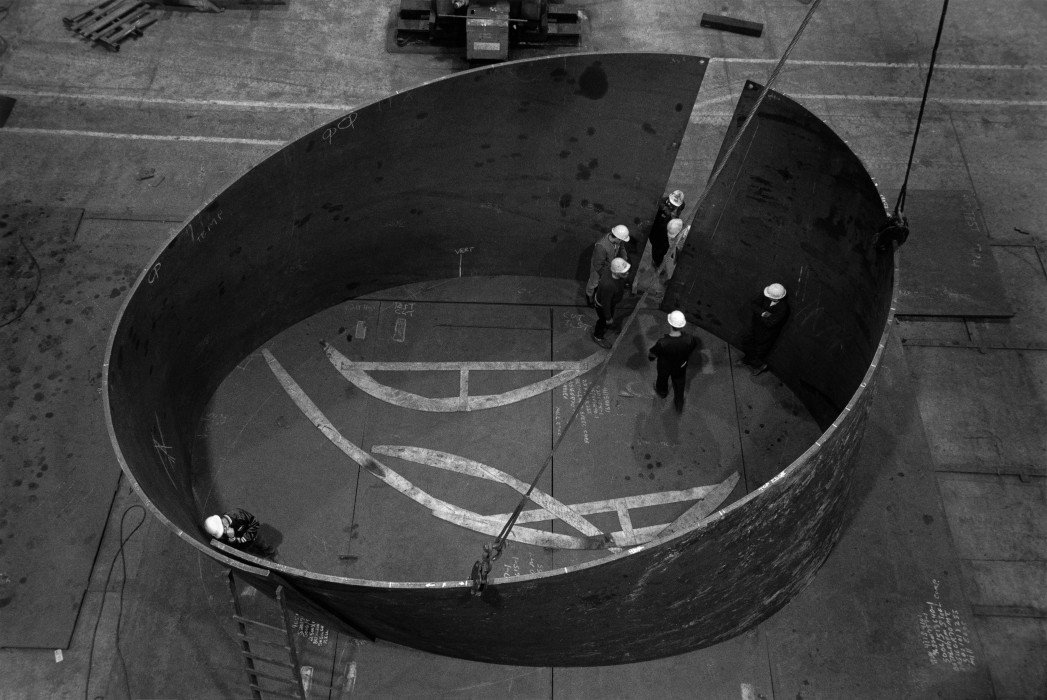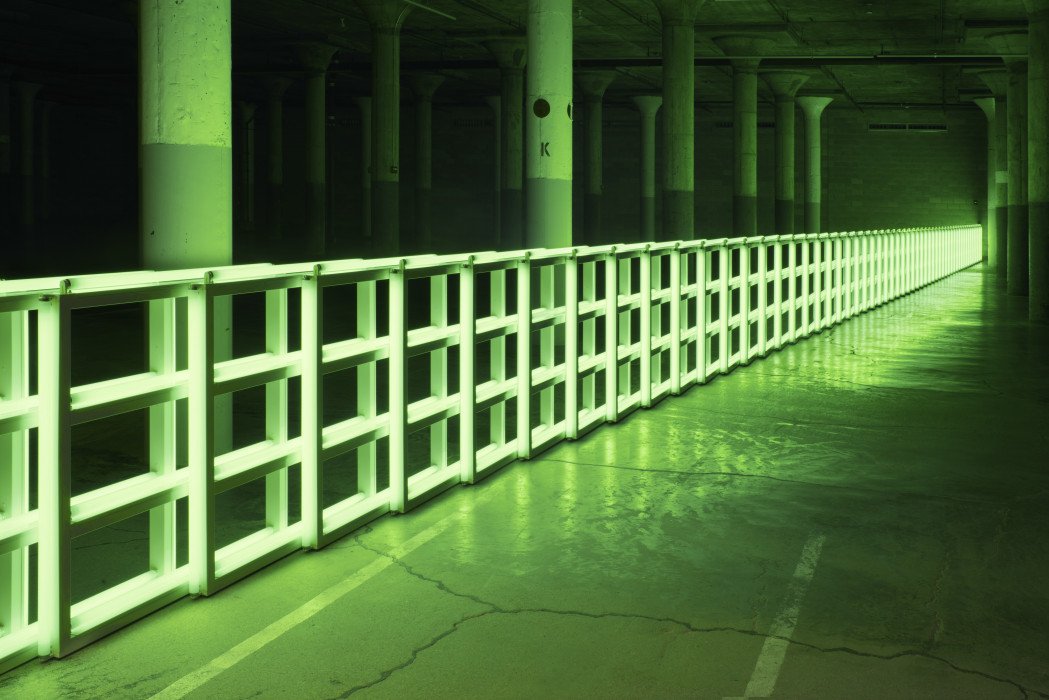A Tour of Dia Artists Featured in RM’s Live Performance at Dia Beacon
In December of last year, the singer RM visited Dia Beacon, posting both pictures of the train ride in from the city, and various artists in our collection on his Instagram. His personal interest in art has been well documented in recent years, as has his role as an arts supporter who is consistently introducing a global audience to art. Recently he released his first solo album, and he approached Dia asking to shoot in our galleries. We are excited to partner with RM, and if you’re curious about the artists he featured in his live performance video, we’ve put together this short tour highlighting them.
When you first arrive at Dia Beacon, you’re greeted by landscaping that precedes the building and surrounds its exterior. This work, designed by Robert Irwin, was part of Beacon Project (1999-2003) created in collaboration with Dia Art Foundation to transform the once Nabisco box making factory into a modern art museum.
Through his use of light and space, Robert Irwin’s work shapes a viewer’s experience by influencing their perception of his work. Beacon Project (1999-2003) highlights the subtle ways Irwin alters perception and in turn their experience at Dia Beacon.
The artist envisioned the museum as a “sequence of experiences” including riding the linear corridor of the Metro North railway up the Hudson River from Grand Central Station in New York City and descending into Dia Beacon’s parking lot. Irwin’s design integrates the building with the surrounding landscape, enhancing the visitor’s experience from the point of entry to the property, through the parking areas, and into the museum galleries.
Taking Beacon’s local horticulture and seasonal light conditions—as well as the former Nabisco factory’s architecture—into consideration, Irwin’s design for the landscape surrounding Dia Beacon incorporates indigenous plants that bloom throughout the year. A grove of flowering hawthorn and crab apple trees provides the setting for the entrance and parking areas. When full grown, the trees will attain a height of approximately twenty-five feet, matching the height of the building.
As you walk through the main entrance, you find yourself traveling through a dark and narrow space before emerging into bright and open museum, filled with light pouring in from the skylights overhead.
“To be an artist is not a matter of making paintings or objects at all. What we are really dealing with is our state of consciousness and the shape of our perception”
—Robert Irwin
If you make a right upon entry, you’ll find yourself on the west side of the museum in a gallery with a colorful array of crushed and twisted metal works created by John Chamberlain.
In the late 1950s, John Chamberlain began vigorously shaping the colorful ruins of old cars into billowing forms. As you move around Chamberlain’s clusters of crushed-metal, the contrasting light filtering through Robert Irwin’s windows makes the space feel light and balanced. Although the individual components appear to interlock organically, Chamberlain insisted that he arranged rather than molded found elements. As a result, the brutality of the salvaged metal and its initial physical attributes are in constant contrast with the sculptor’s precise assembly.
As you make your way toward the back of the building, you’ll head to the right to find the elevator, and then a set of stairs providing you with access to the second floor, mezzanine, and lower level.
With one quick flight of stairs down (or floor M in the elevator), you’ll enter the mezzanine which is home to Richard Serra’s Torqued Ellipses. Created between 1996-2000, these five works were inspired by the curved shapes of Italian architect Francesco Borromini’s church of San Carlo alle Quattro Fontane (1646) in Rome, which he had visited in the early 1990s and resulted with Serra deciding to take an elliptical volume and torque—or twist—it.
As a young artist, Serra was strongly affected by contemporary dance, which prompted him, he has said, to consider “ways of relating movement to material and space.” It allowed him “to think about sculpture in an open and extended field. . . . I found very important the idea of the body passing through space, and the body’s movement not being predicated totally on image or sight or optical awareness, but on physical awareness in relation to space, place, time, movement.”
Due to the size of Serra’s Torqued Ellipses, the viewer must physically move around and through each ellipse to fully see them in their entirety. As a result, Richard Serra forces the viewer into the role of a wanderer.
Before continuing your journey down toward the lower level, you will notice a green light reaching towards you as you stand at the top of the stairs. As you descend, you’ll catch glimpses of green before becoming entirely consumed by its glow. In the basement, you’ll find Dan Flavin’s untitled (to you, Heiner, with admiration and affection), 1973.
Positioned alongside the wall, Flavin’s square, fluorescent-green units are placed side by side at two-foot intervals, eventually ending at a glass door, while the reflection makes it seem like it extends outdoors. The dimensions of this site-responsive installation are variable and aim to disrupt the architecture of the exhibition space. Bisecting one of Dia Beacon’s lower-level galleries, the green barrier draws attention to the complicated relationship between the optical and physical elements of the artist’s practice.
Through his use of commercially available fluorescent tubes, Dan Flavin brings the viewer’s awareness to color, space, and the way they navigate this experience combined.
We’d love for you to visit Dia Beacon, and experience these works in person. Dia Beacon is open Friday–Monday, 10 am–4 pm. Advanced reservations are suggested, you can purchase tickets here. Additionally, if you’re in New York City and have never visited us before, we’ve put together a helpful guide to make your journey as easy as possible.







